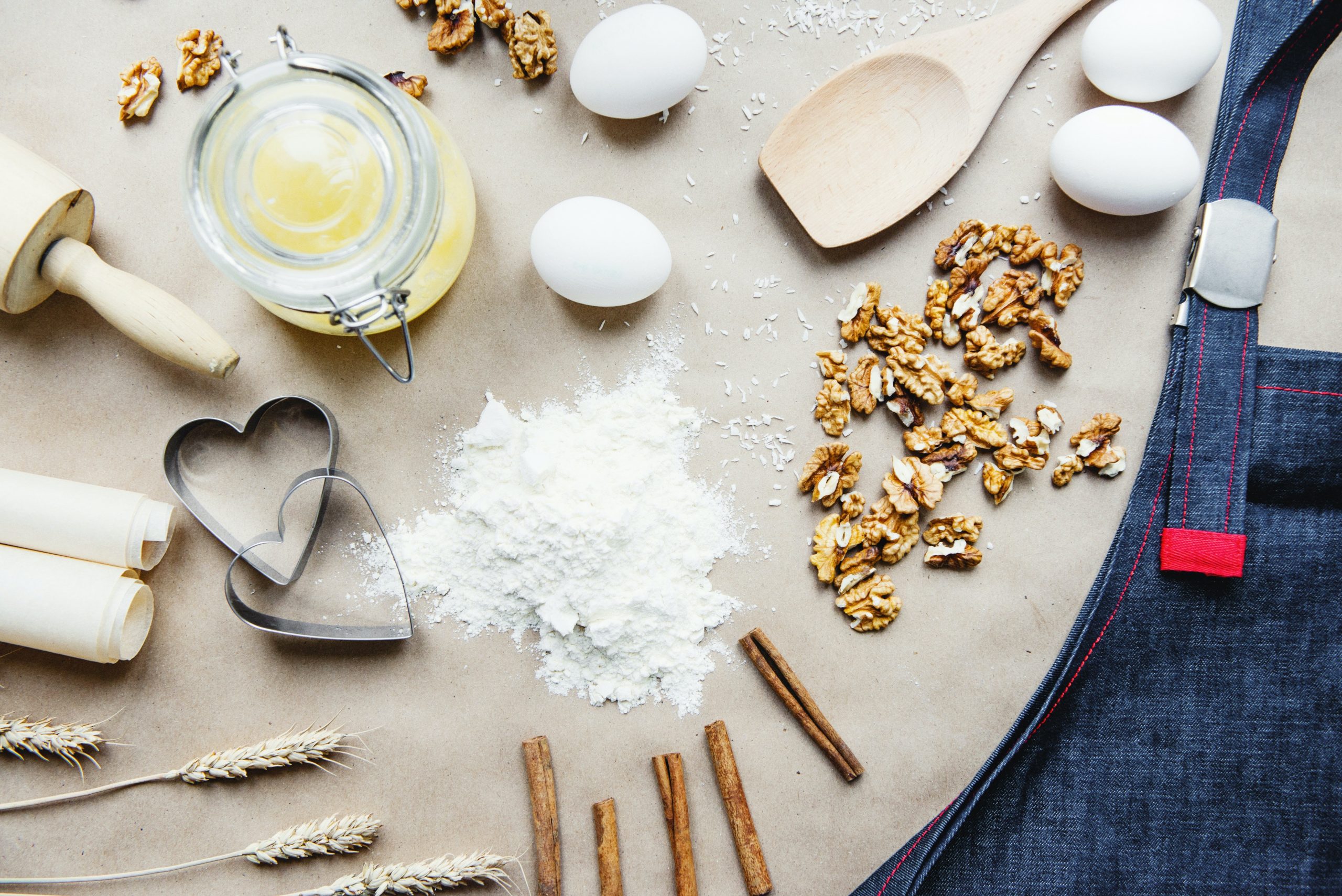Baking is more than just following a recipe—it’s a precise science where every ingredient and technique plays a crucial role in achieving the perfect texture, flavor, and appearance. From understanding the chemistry behind different ingredients to mastering essential techniques, learning the science of baking can help you create consistently delicious cakes, pastries, breads, and more.
In this comprehensive guide, we’ll explore the key ingredients that define great baking, how they interact, and the techniques that will elevate your baking skills to the next level. Whether you’re a beginner or an experienced baker, this blog will provide valuable insights into the art and science of baking.
Chapter 1: The Essential Ingredients in Baking and Their Roles
1. Flour: The Foundation of Structure
- Different types of flour and their uses:
- All-purpose flour
- Cake flour
- Bread flour
- Whole wheat flour
- Gluten-free alternatives
- How gluten formation affects texture
- The role of protein content in flour
2. Sugar: More Than Just Sweetness
- How sugar impacts flavor, texture, and moisture retention
- Different types of sugar:
- Granulated sugar
- Brown sugar
- Powdered sugar
- Honey and syrups
- The role of caramelization and Maillard reaction in baking
3. Fats: The Key to Moisture and Flavor
- Types of fats used in baking:
- Butter
- Margarine
- Shortening
- Oils
- How fats contribute to texture and tenderness
- The importance of creaming butter and sugar properly
4. Leavening Agents: Creating Light and Airy Bakes
- How chemical leaveners work:
- Baking soda vs. baking powder
- The role of yeast in bread baking
- How steam and air contribute to rising
5. Eggs: Binding, Structure, and Richness
- The role of egg proteins in structure
- How eggs contribute to color and texture
- Differences between using whole eggs, yolks, or whites
6. Liquids: Balancing Moisture and Structure
- The role of milk, water, and other liquids in baking
- How dairy products add richness and softness
- The effect of liquid-to-dry ingredient ratio on texture
Chapter 2: The Science Behind Baking Techniques
1. Mixing Methods and Why They Matter
- The importance of properly creaming butter and sugar
- How overmixing can affect gluten development
- The difference between folding, beating, and stirring
2. Kneading and Gluten Development
- How kneading affects bread texture
- The windowpane test for perfect dough
- How hydration levels impact gluten strength
3. Proofing and Fermentation
- Understanding yeast fermentation in bread making
- How proofing time affects texture and flavor
- The importance of temperature control during proofing
4. Baking Temperatures and Heat Transfer
- How different baking temperatures affect texture
- The importance of preheating your oven
- Convection vs. conventional ovens and how they impact baking
5. Cooling and Storage Techniques
- Why cooling on a wire rack prevents sogginess
- How to properly store baked goods to maintain freshness
- The impact of refrigeration and freezing on texture
Chapter 3: Mastering Doughs and Batters
1. Bread Doughs: The Foundation of Baking
- Differences between lean and enriched doughs
- How hydration affects dough consistency
- Common mistakes when making bread
2. Cake and Muffin Batters: Achieving the Perfect Rise
- The role of emulsification in cakes
- Why proper mixing ensures a light and airy texture
- Common mistakes when baking cakes
3. Cookie Doughs: The Art of Texture Control
- How different fats affect cookie texture (chewy vs. crispy)
- The role of chilling dough before baking
- Understanding spread and thickness in cookies
Chapter 4: Understanding the Chemistry of Baking
1. The Maillard Reaction and Caramelization
- How browning enhances flavor and texture
- The role of sugar and proteins in the Maillard reaction
2. pH Balance in Baking
- How acids and bases affect texture and leavening
- The role of ingredients like vinegar, lemon juice, and buttermilk
3. How Temperature Affects Ingredients
- Why room temperature ingredients improve consistency
- The impact of cold vs. melted butter in baking
Chapter 5: Baking Troubleshooting Guide
1. Common Cake Problems and Solutions
- Why cakes sink in the middle and how to fix it
- How to prevent dry or dense cakes
2. Bread Baking Challenges
- Why bread doesn’t rise properly
- How to achieve a crispy crust without overbaking
3. Cookie Baking Mistakes
- Why cookies spread too much or don’t spread at all
- How to get perfectly chewy or crispy cookies
Chapter 6: Tips for Becoming a Better Baker
- The importance of measuring ingredients correctly
- Why practice and experimentation lead to better results
- How to adjust recipes for altitude or dietary need.
Conclusion
Baking is a combination of art and science, and mastering it requires understanding how ingredients interact and how techniques impact the final product. By applying these insights, you can elevate your baking skills and create consistently delicious results. Whether you’re baking at home for fun or aiming to improve professionally, these principles will guide you toward baking success.

